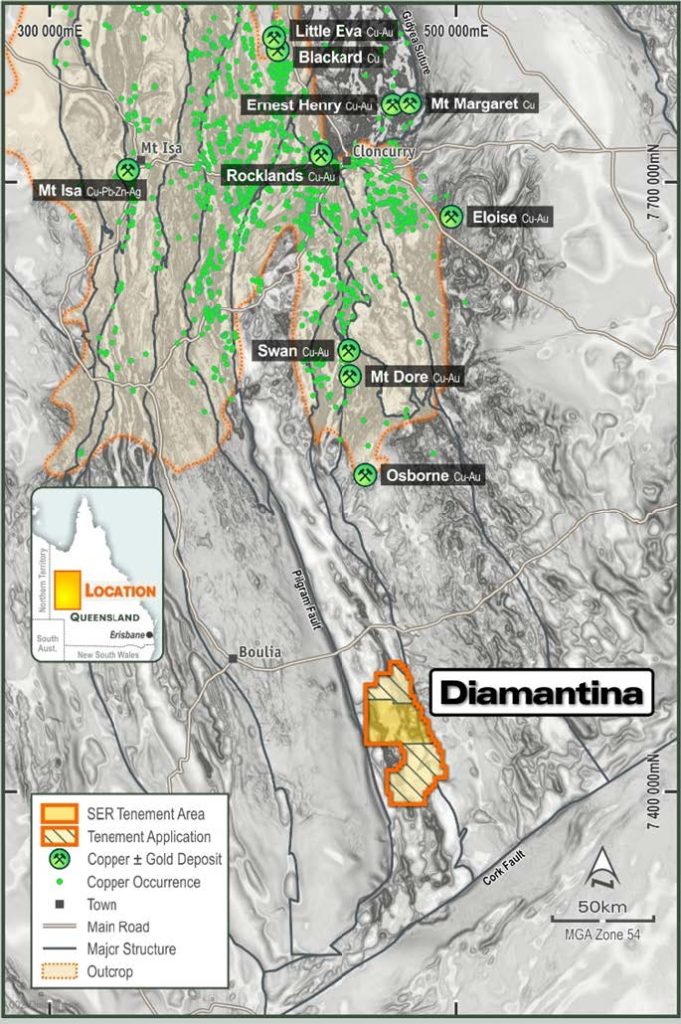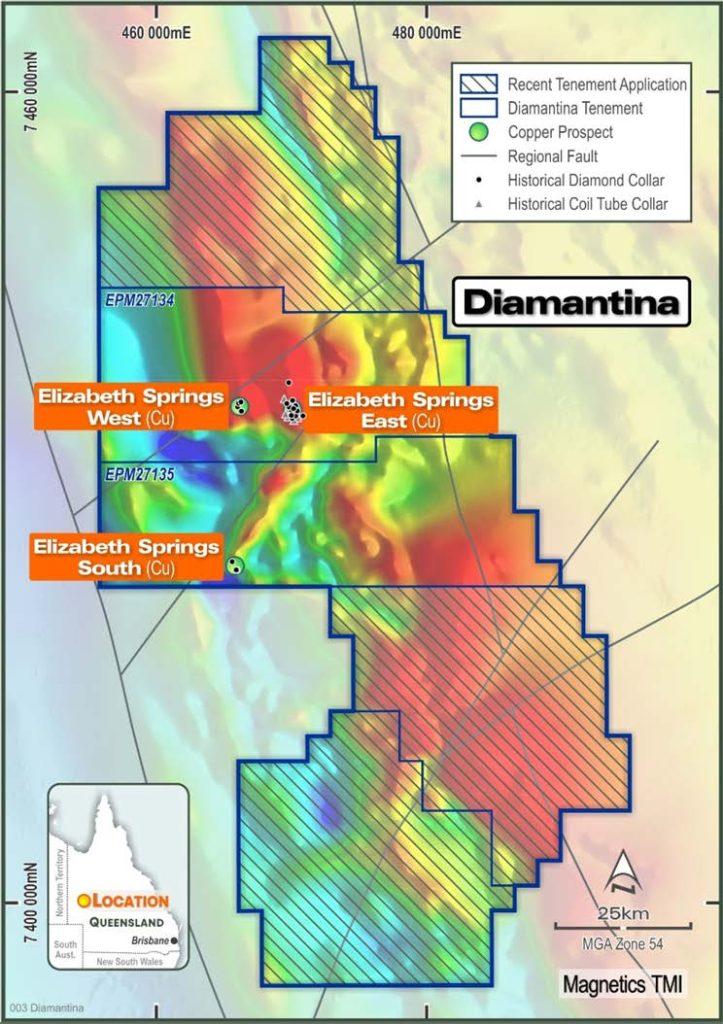DIAMANTINA Cu-Au PROJECT
The Diamantina Project comprises two exploration licences EPM27134-35 (630km2) and three exploration licence applications (EPM29278-29280, 945km2 ) located south of the outcropping Proterozoic-aged and extensively mineralised Mount Isa Inlier (Figure 1). Geological and structural interpretation of geophysical datasets shows the Proterozoic sequences continue south along the Pilgram Fault under more recent cover rocks.
The Proterozoic rocks of the Mount Isa Inlier Eastern Fold Belt are known to host mineralisation, especially IOCG-style mineralisation with numerous mineral deposits found in outcropping Proterozoic rocks as well as under shallow cover including Osborne (IOCG), Ernest Henry (IOCG), Cannington (BHT), Mary Kathleen (IOCG/skarn), Eloise (IOCG), Swan (IOCG), Mount Elliot (IOCG), and Starra-Selwyn (IOCG). Within the project area, Proterozoic rocks are inferred from geophysics (subsequently confirmed by drilling) to be covered by approximately 350m of younger sedimentary rocks of the Eromanga and Georgina basins.

Previous Exploration
In 2018, Anglo American completed a review of continental and regional datasets across the Eastern Fold Belt, identifying the potential for multiple mineral systems under cover. Anglo American applied for 45 mineral exploration licences, capturing both the eastern and western magnetic trends south of the Mt Isa Inlier.
In 2021, Anglo American reanalysed seven historic drill cores from the Diamantina project area using logging, petrophysics, XRF scanning, hyperspectral scanning, petrology, geochronology, and multi-element geochemistry to search for new insights into the stratigraphy of the region and the nature of the alteration and low-grade mineralisation intersected. Anglo American concluded that the alteration intersected was consistent with alteration known to be present in the halos of IOCG and IOCG/skarn systems, particularly elevated levels of REE’s and certain pathfinder elements1 .
Multiple geophysical datasets including airborne gravity gradiometry, ground gravity, magnetotellurics and passive seismic were collected and modelled to systematically refine the search space. Follow-up exploration to work previously undertaken by Red Metal Limited2 (ASX:RDM) was conducted at the Elizabeth Springs combined gravity and magnetic anomalies (Figure 2).
- Anglo American Exploration (Australia) CE10128 report ↩︎
- Red Metal Limited, Elizabeth Springs Central Annual Reports EL13321, CR57273 ↩︎


